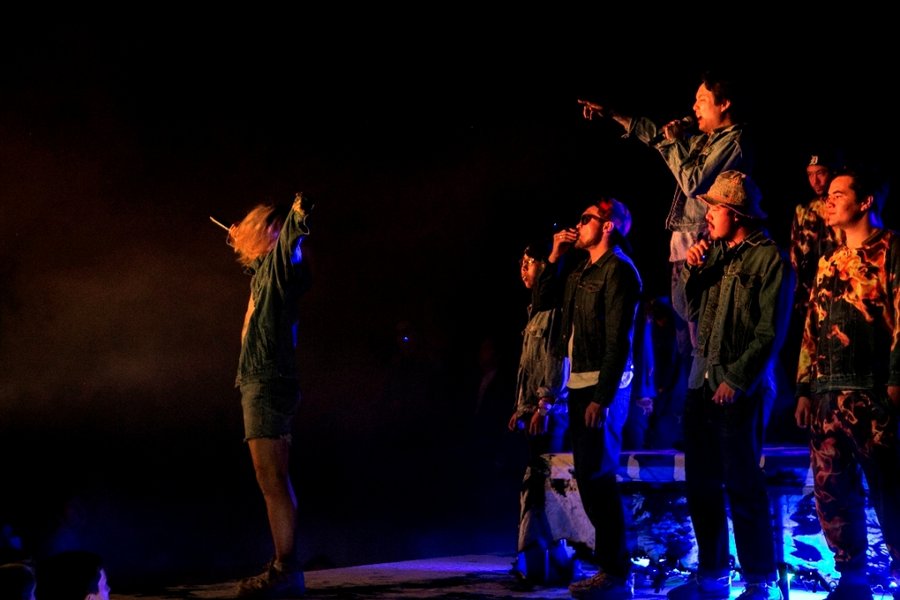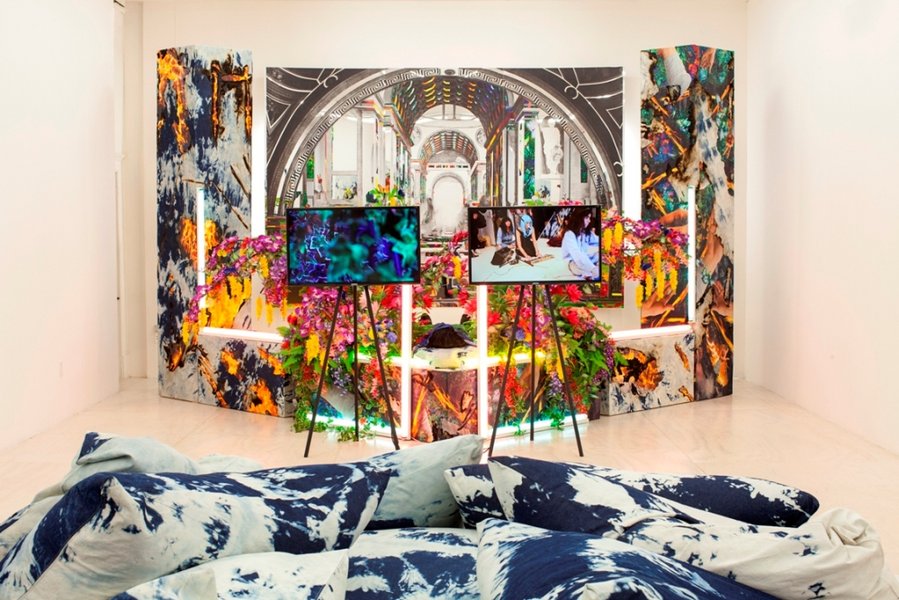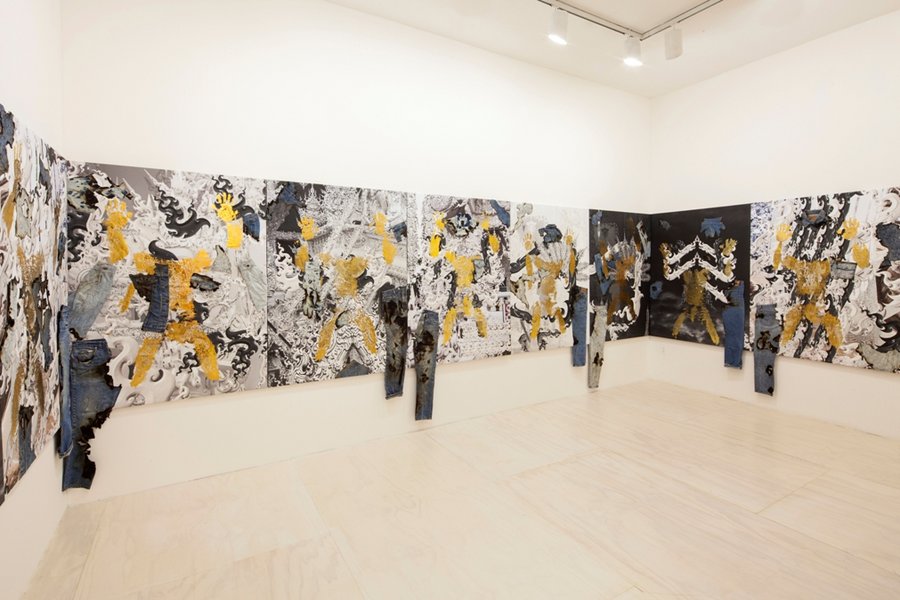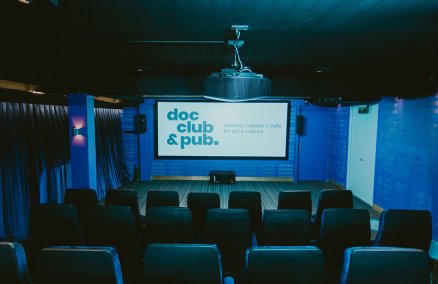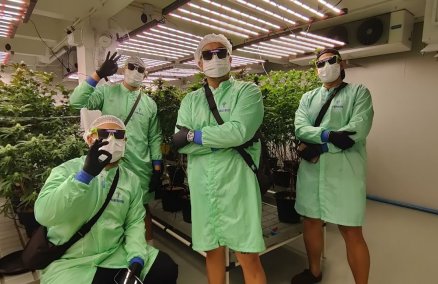Like most Thai kids in an all-boys high school, playing video games and drawing cartoons were my only creative outlets. Then I had a band with my friends at Bangkok Christian College.
Grammy tried to convince me to join this G-Junior program, where you had to train every day like a soldier for a chance to become a teen pop star. It sounded horrible to waste so much time doing that, so I turned it down. Playing in a band was my channel for expressing myself.
Art classes in Thai schools are full of rules. The first time I was really exposed to art is when I moved to NIST international school, where you were allowed more space for creativity.
Seeing the work of the Young British Artists at Saatchi was a revelation. I got the chance to visit the gallery during my trip to see my brother in London. Being in the 11th grade and seeing the large-scale sensationalist works of Damien Hirst, Tracey Emin and the Chapman Brothers was an eye-opener. Before that I only knew Thawan Duchanee and Chalermchai Kositpipat.
The experience showed me that there’s a space and audience for art. When I came back I was more focused on doing my work in the art class.
I quit graphic design after two weeks at Rhodes Island School of Design. I applied and got accepted, but soon realized it wasn’t my thing. I switched to printmaking and told my father I was studying print design. The course was very open, and I thought it was the only chance to try everything. So I got to try my hand at illustration, puppeteering and even acting.
I don’t want to work for others; I want to work for myself. Art is different from design. A work of art can exist in the world for its own reason, not to serve a purpose or deliver a message.
The school was more about energy and attitude. It was a warehouse culture, filled with noisy music and lots of parties. Although I learned technical skills, it was more about lifestyle.
I brought with me that energy and attitude to New York City. I funded my stay with a commissioned artwork for Dell laptop cases; it was enough to live cheaply in a studio in Brooklyn for a year. Then my friends and I started to arrange our own shows and parties in strange places.
I gain a lot more from artists’ lectures than from seeing their work. There’s so much knowledge in the academic world. One thing artists can contribute to the world is to pass on knowledge through teaching. I was interested in becoming a teacher one day, which was one of the reasons I applied to Columbia University’s MFA program.
My path became clear when I got into Columbia. I knew I was going to be an artist. When you choose to study a master’s in fine art, it allows you to immerse yourself deeply into the art world and economy. I worked for a brief period as a brush washer for an artist but quit after I was able to sell my work. At one point [art curator] Hans Ulrich Obrist took notice, and he later brought MoMA PS1 director Klaus Biesenbach to see my work.
Intensity enthralls me. In my work there are levels of intensity: the abrupt contrast between the artificial surface of the installation and the realism in the videos I make, the music, the dynamic change in the videos.
I use vivid lights to draw people into my work, the same mechanics Las Vegas casinos employ to lure in gamblers.
I love the energy at live concerts. You share the moment with the people next to you, energy-wise. It’s not a verbal experience, but the energy and the togetherness binds you with the people next to you. My work seeks to create that moment.
My work seeks a common ground for people to share moments of experience. There are elements in my work, for example, fire or bleached jeans, which are very generic and objectively subjective to everyone.
Mundane things we see every day are eccentric from another viewpoint. It becomes evident when you travel a lot. It all depends on how you judge normality.
The value placed on a piece of art is merely a cultural construction. The controversial Thailand’s Got Talent incident in which a topless go-go dancer [Duangjai Jansaunoi] performed body painting enraged the audience. Chalermchai branded it lousy for its lack of mastery based on an outdated Western model. But that might not be the right question to start with. The value of Du Champ’s Fountain was not the urinal itself but the process through which he lobbied for it to be exhibited. Art is about contextualization.
Attitude is more important than materials and aesthetics in my work. It’s about defining the attitude of being an artist. It is not about working in a studio. An artist is a person, and art and life can become one. I want to merge them into a full picture, depicting how art can be as diverse as life. That’s why I don’t stick to any one medium; I rap, do videos, installations and furniture. One day I could open a restaurant.
Vulnerability can be power. Sometimes I feel naked. I put so much of myself into my work. There’s so much personal stuff in the videos I make. But while you’re feeling naked or less powerful, you have the power to address or influence something. It can be a powerful position.
I want to reach a wider range of people, not just groups with specific knowledge. There’s an advantage in making art in this system—showing work in galleries and museums—but I want to make an impact on more people. I’m working on a feature film, but it will take four to five years.










